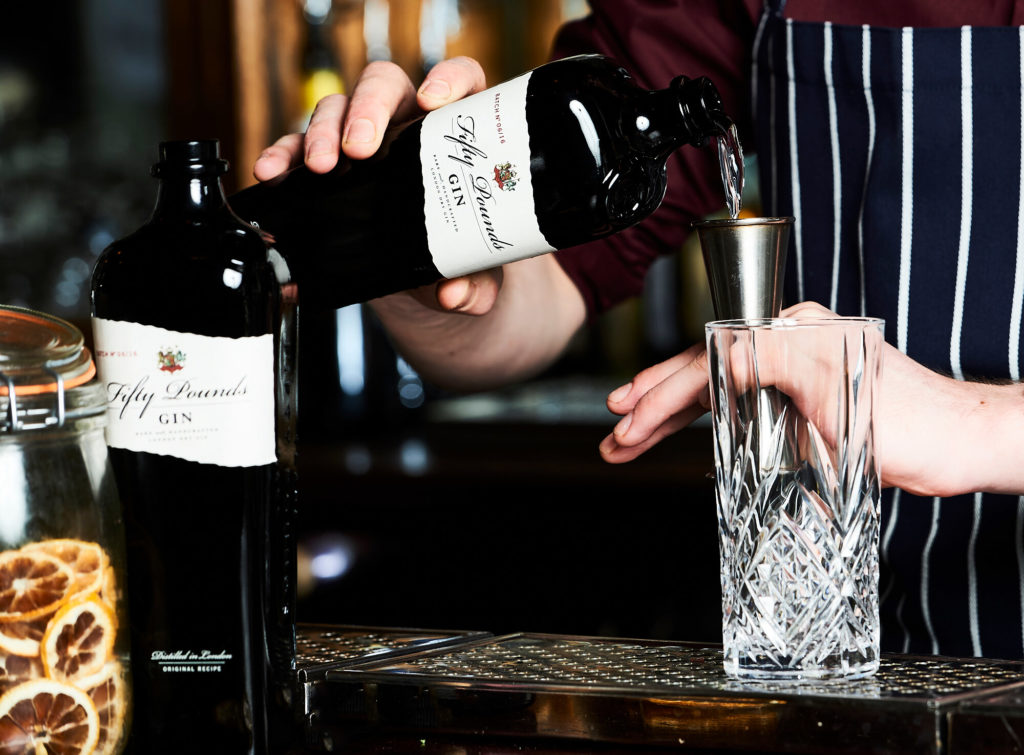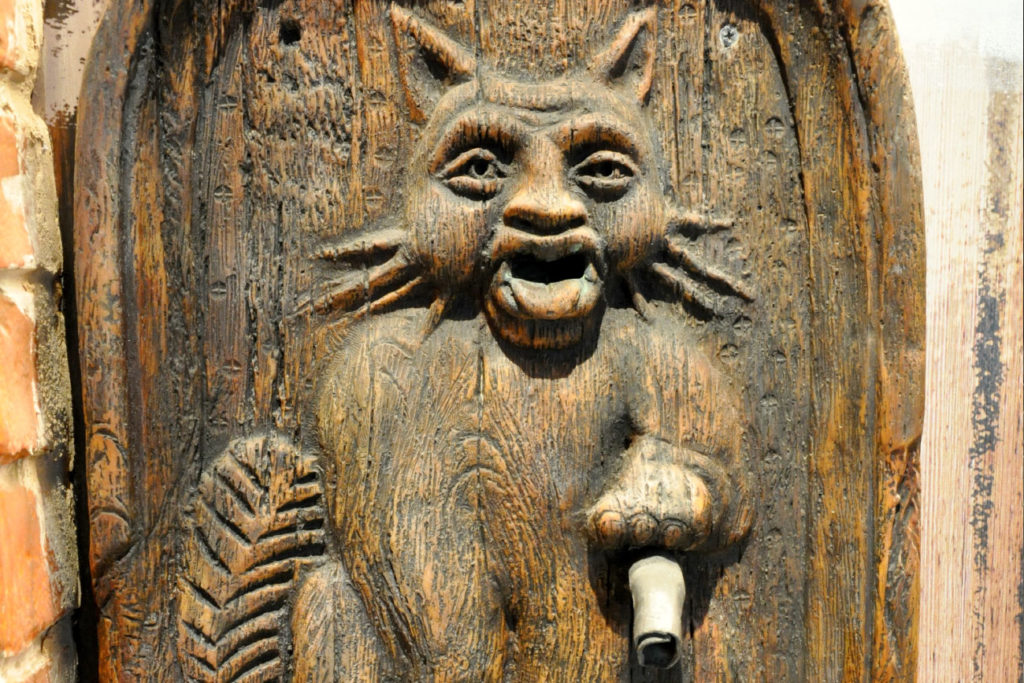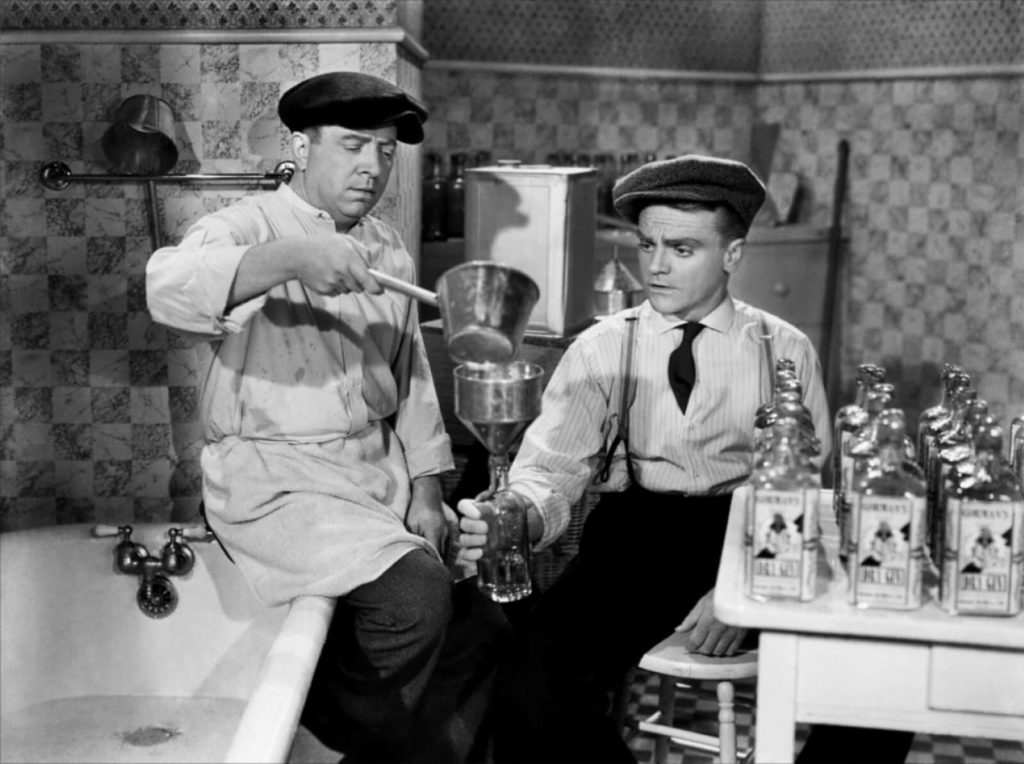If you are new to gin you might not be familiar with all the different types of gin yet. Or if you are an experienced gin connoisseur you can test your knowledge of these terms.
London Dry Gin
London Dry Gin is the dry juniper-forward gin. Think about classics such as our very own Fifty Pounds Gin. There are no requirements for the gin to be made in London – the description tells you how the gin is made, not where. Legally it is stated that London Dry Gin must be distilled to at least 70% ABV, must not contain any artificial ingredients and cannot have any flavours or colourings added after distillation. Only additional water, base spirit and a minute amount of natural sweetening can be added after distillation.
Dutch Genever
Genever (also known as Jenever) is popular in the Netherlands and Belgium. The distillation is similar to whisky, and it does have similarities in flavour. Malt wine is distilled in a pot still and flavoured with juniper. There are two types of Genever, young and old. Old Genever must be distilled from a minimum of 15% malt wine with no more than 20g sugar per litre, and Young Genever is made with 10g sugar per litre and a maximum of 15% malt wine.
Distilled Gin
Distilled Gin is made by redistilling the base spirit with natural ingredients, but it is also possible to add natural or artificial flavourings and colourings after the distillation.
For example, Hendrick’s Gins’ two main botanicals (cucumber and rose petals) are too delicate for the redistillation and are therefore added after the other botanicals have been distilled with the base spirit.
Old Tom
The Old Tom recipe is sweeter than London Dry as sugar is added during the redistillation process. This type of sweeter gin used to be very popular; the sweetness would mask the taste of the base spirit. There are many stories of where the name Old Tom originated, but my favourite is the one about the secret gin windows…
A black wooden sign shaped like a cat was mounted outside some pubs. You’d put money in the slot under the cat’s paw and receive a shot of gin poured straight into your mouth through a tube coming from inside the pub! Very secretive indeed.
Sloe Gin
Frozen sloe drupes (sloe is actually a fruit, not a berry) are added into gin and left to macerate for months. After two to three months, the liquid is strained and a preferred amount of sugar is added. Sloe comes from blackthorn trees and is part of the plum family.
Sloe Gin is considered as liquor, but it can be as high as 30% ABV.
Cold-Compound Gin
This type of gin does not have to be redistilled. The flavourings and sugars, natural or artificial, are added directly to the spirit. Compound Gin used to be very popular as it is much faster to make and the method makes it easy to cover the taste of any low-quality spirit by simply compounding it with different fruits and botanicals.
You might have heard the term Bathtub Gin. The name came from people using their bathtubs to macerate the botanicals together with the spirit. There is actually a gin called Bathtub Gin, but you should not confuse it with any old moonshine; it is actually a decent gin.
Navy Strength Gin
Navy Strength Gin is basically your typical gin, but much stronger, 57% ABV. The Royal Navy used to have a rule that all the gin on board had to be gunpowder proof. Basically, the gin was stored below the deck and if it ever spilt over the gunpowder it meant the gunpowder wouldn’t light. Therefore, some very clever officers came up with the idea of only having stronger gins (at least 114 proof, 57% ABV today). This was tested by pouring gin over the gunpowder – if it burned the gin was approved on board.
Written by Inka On the Sauce Again




